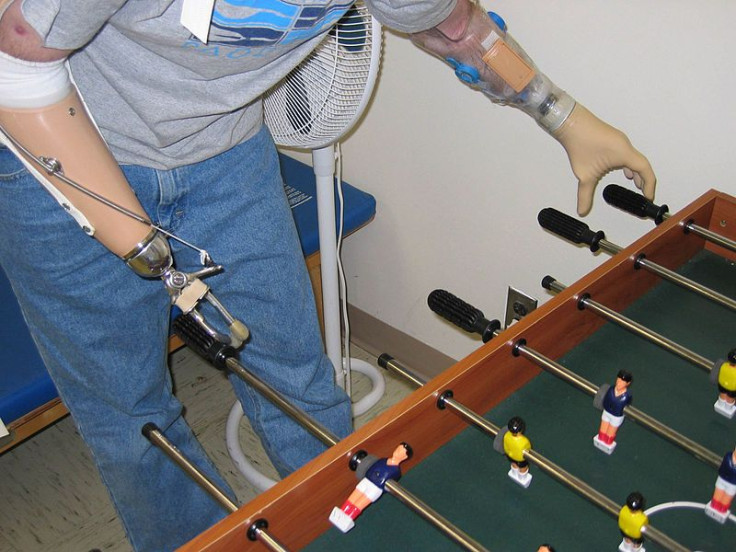Bionic Limb Allows Amputee To Control Movement With Brain Activity

It's like something out of a science fiction movie.
A mechanical limb that responds to the user's brain activity could be the next big development in medicine.
Researchers from Johns Hopkins University say they have engineered "the most sophisticated robotic limb" in medical history that can mimic every movement of a natural arm based solely on brain power, according to CNN.
The Modular Prosthetic Limb (MPL) comes equipped with a tiny computing system that controls 100 sensors, 26 joints, and 17 motors. Electrical impulses given off by the phantom limb, or the area where an amputee's arm used to be, trigger the MPL's function.
"We take all the electrical signals that are going down to the missing limb and reroute them into residual muscles that are still there," said Dr. Albert Chi, assistant professor of surgery at Johns Hopkins.
After cancer took a man named Johnny Matheney's left arm back in 2008, he thought simple household chores like cooking or cleaning would be an entirely new challenge.
Matheney became one of 50 people in the world to receive targeted muscle reinnervation which entails surgery to reroute nerve endings that control arm and hand movement. Two weeks after the surgery he was astonished to find out he could feel the movements of his extremities as if they were still there.
"After the surgery I was constantly rubbing my stump to see what new feeling was coming in. I said 'Wow I can feel my pinky finger.' I kept on doing it, and it was like 'Oh right, I've got a pointer,'" explained Matheney.
Syncing Matheney's altered nerve endings with the computing system in the artificial limb enables him to control movement just by thinking about it.
So what's the difference between the Modular Prosthetic Limb and other machine-driven prosthetic limbs?
The DEKA Arm, or its affectionate Star Wars-inspired nickname "Luke Arm," has gained a considerable amount of attention recently as it lobbies for approval from the U.S. Food and Drug Administration (FDA).
This robotic limb is controlled by a tiny computer chip placed in the brain. Brain signals picked up by the microchip are redirected to the control system of the prosthetic.
Growing concern over its effectiveness has focused on the body's rejection of the chip or how it will last over the years.
Although the Luke Arm has received funding from Defense Advanced Research Projects Agency (DARPA), the artificial limb's designer Dean Kamen still awaits approval from the FDA after two years of clinical trials.



























